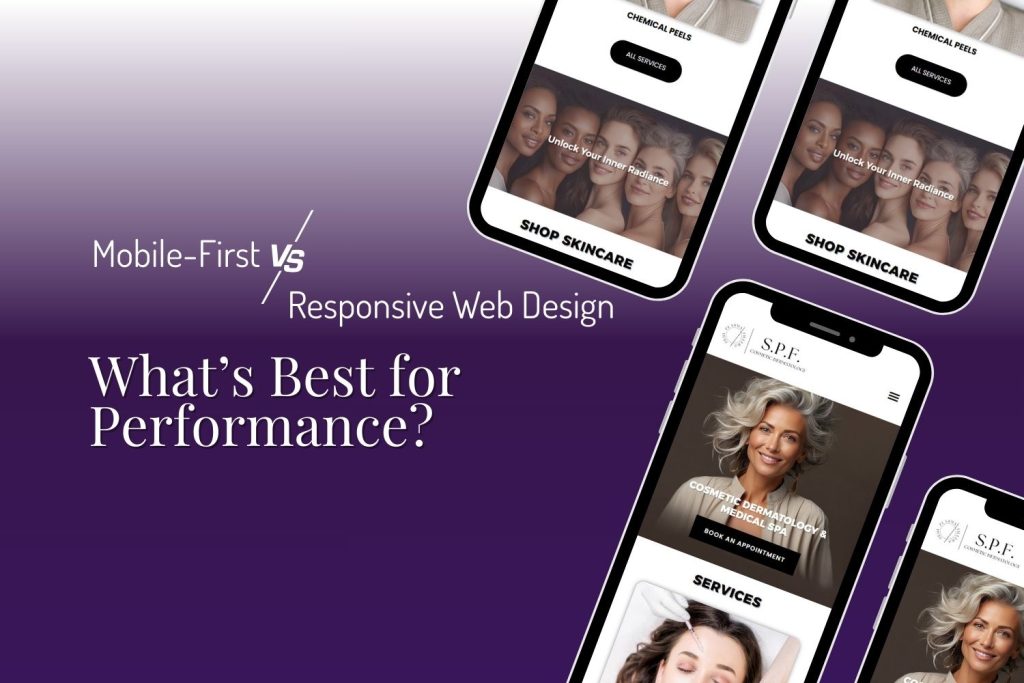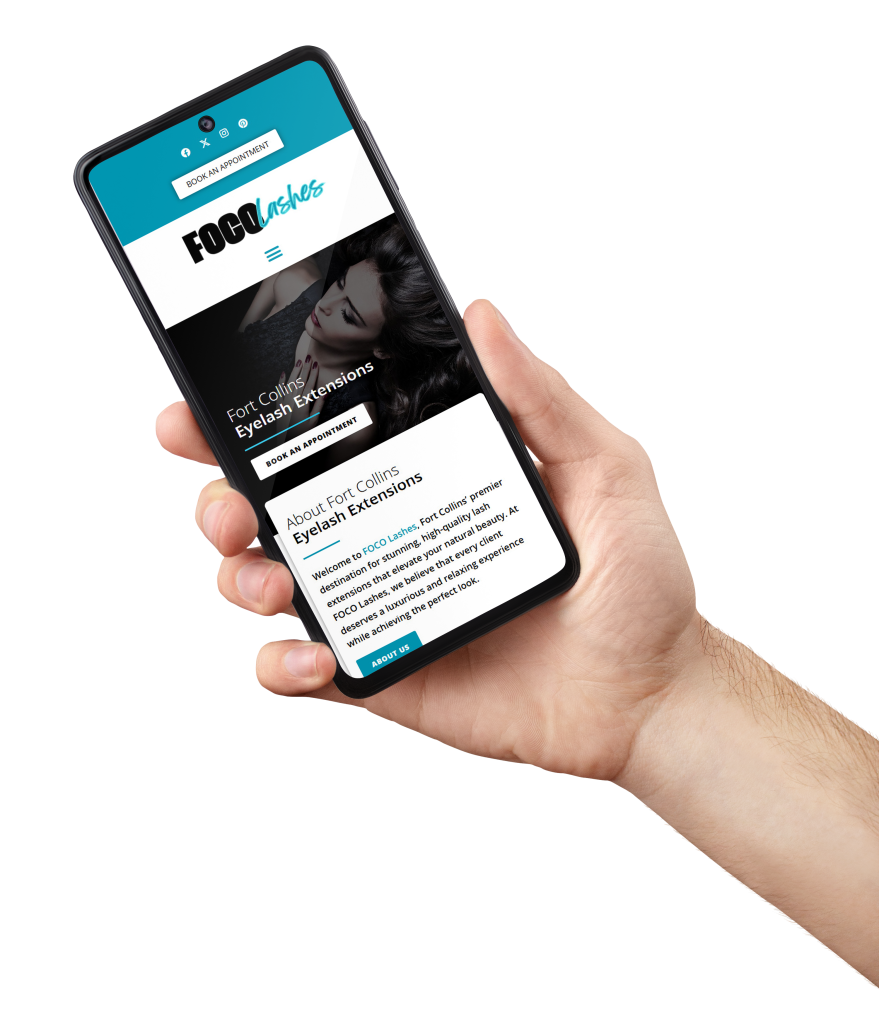
Mobile-First vs. Responsive Web Design: What’s Best for Performance?
In today’s digital world, user expectations are higher than ever. People want fast-loading, seamless, and visually appealing websites whether they’re browsing on a smartphone, tablet, or desktop. For businesses, this demand raises an important question: Mobile-First vs. Responsive Web Design—what’s best for performance? Both approaches aim to create a positive user experience across devices, but they differ in strategy, implementation, and results. Understanding the advantages and drawbacks of each method can help business owners make smarter decisions when investing in web design that truly drives traffic and conversions.
Recent Posts
Follow Us on Social Media
Stay Up to Date With the Latest Digital Marketing Tips & Tricks

Mobile-First vs. Responsive Web Design: What’s Best for Performance?
In today’s digital world, user expectations are higher than ever. People want fast-loading, seamless, and visually appealing websites whether they’re browsing on a smartphone, tablet, or desktop. For businesses, this demand raises an important question: Mobile-First vs. Responsive Web Design—what’s best for performance? Both approaches aim to create a positive user experience across devices, but they differ in strategy, implementation, and results. Understanding the advantages and drawbacks of each method can help business owners make smarter decisions when investing in web design that truly drives traffic and conversions.
Why Mobile Experience Matters in Web Design
Before diving into the comparison of Mobile-First vs. Responsive Web Design, it’s essential to understand why mobile experience is at the center of modern website design. Over 60% of global web traffic now comes from mobile devices, and Google uses mobile-first indexing, meaning your site’s mobile version largely determines your search engine rankings. That makes performance, accessibility, and adaptability across devices non-negotiable. Businesses that overlook mobile optimization risk higher bounce rates, lower rankings, and missed opportunities for conversions. Effective web design is no longer about just looking good on desktops—it’s about functionality and speed on any screen.
Mobile-First vs. Responsive Web Design: Defining the Approaches
To decide between Mobile-First vs. Responsive Web Design, you need to understand how each approach is built and what that means for performance.
Mobile-First vs. Responsive Web Design in Practice
The phrase Mobile-First vs. Responsive Web Design captures two different development philosophies. A mobile-first approach starts by designing and coding for mobile devices first, then progressively enhancing the layout for larger screens. This ensures that mobile users—who make up the majority of web traffic—get the fastest, cleanest experience possible. Responsive design, on the other hand, begins with a desktop version and then uses flexible layouts, fluid grids, and media queries to adjust to smaller screens. Both strategies use web design techniques that adapt, but their starting point and optimization priorities differ significantly.
The Core Principles of Mobile-First Design
Mobile-first design prioritizes small screens and limited bandwidth. Developers start with essential content and features, ensuring speed and usability are maximized on smartphones. Enhancements like larger images, animations, or complex navigation are added later for desktop users. From a performance perspective, this often results in faster load times and leaner website design because the foundation is optimized for minimal resources. Businesses targeting mobile-heavy audiences, like eCommerce or local service providers, benefit greatly from mobile-first strategies.


The Core Principles of Responsive Web Design
Responsive web design builds a single site that adjusts across devices. Rather than creating separate versions, developers use CSS media queries, fluid grids, and flexible images to ensure layouts resize and reflow seamlessly. While this approach saves time and ensures consistency across platforms, performance can sometimes suffer if the site isn’t carefully optimized. For example, loading large desktop assets on mobile devices can slow down performance. Still, responsive design remains the most widely adopted method because it simplifies website design management while covering all devices in one framework.
Performance Comparison: Mobile-First vs. Responsive Web Design
The real debate around Mobile-First vs. Responsive Web Design lies in performance. A mobile-first site generally loads faster on smartphones, thanks to streamlined code and lighter assets. Since speed is a major factor in SEO and user experience, this can directly impact bounce rates and conversion rates. Responsive design, while flexible, may require additional optimization steps to match mobile-first performance levels. However, responsive design’s strength lies in its adaptability, ensuring users enjoy a consistent experience across all devices without needing separate builds.
SEO Implications of Mobile-First vs. Responsive Web Design
Search engines care deeply about user experience, and site performance is a ranking factor. Google’s mobile-first indexing gives mobile-first design an inherent advantage, but responsive web design is also highly recommended by Google as long as it’s optimized. The main takeaway is that whichever approach you choose, ensuring fast load times, optimized images, and mobile-friendly navigation is crucial. Poorly executed responsive sites can harm SEO if mobile users face long load times, while a well-optimized mobile-first site can give you a competitive edge.
Cost and Maintenance Considerations
When comparing Mobile-First vs. Responsive Web Design, cost and long-term maintenance matter for businesses. Mobile-first design can require more upfront planning and coding, which may increase initial development costs. However, it often reduces ongoing optimization needs for mobile performance. Responsive design is often faster to implement and easier to maintain because there’s only one set of code and design to update. The trade-off is that extra work may be required to optimize performance across all devices, particularly mobile.
User Experience Differences
A critical element of the Mobile-First vs. Responsive Web Design debate is user experience. Mobile-first ensures that mobile visitors have a clean, intuitive, and fast experience. Responsive design guarantees consistency across devices, so users moving between desktop and mobile see the same brand presentation. The decision often comes down to audience behavior. If most of your customers access your site via mobile, mobile-first may deliver better results. If you have a balanced audience or value cross-platform consistency, responsive website design could be the better option.
When to Choose Mobile-First Design
Mobile-first design is best for businesses whose audience primarily visits from mobile devices. Industries such as food delivery, eCommerce, or local services can benefit from its lean performance and faster loading times. It’s also ideal for startups or businesses that want to future-proof their digital presence, as the trend toward mobile usage continues to grow. Investing in mobile-first web design can give you a strategic advantage, particularly when mobile conversions drive revenue.
When to Choose Responsive Web Design
Responsive design works well for businesses seeking a cost-effective solution that delivers a consistent experience across all platforms. Companies with audiences spread evenly across desktops, tablets, and smartphones may find responsive website design more practical. It’s also an excellent choice for organizations that frequently update content, since one codebase simplifies maintenance. While performance optimization is necessary, responsive sites remain the industry standard because of their flexibility and efficiency.
Best Practices for Performance Optimization
Regardless of whether you choose Mobile-First vs. Responsive Web Design, performance optimization should be a top priority. Key practices include compressing images, leveraging browser caching, minimizing CSS and JavaScript, and using content delivery networks (CDNs). A professional web design agency can implement these best practices while tailoring your site for mobile-first or responsive strategies. This ensures your business not only meets user expectations but also achieves stronger search engine rankings and higher conversions.
Mobile-First vs. Responsive Web Design—What’s Right for You?
The debate of Mobile-First vs. Responsive Web Design doesn’t have a one-size-fits-all answer. The right choice depends on your audience, goals, and resources. Mobile-first excels in speed and mobile optimization, while responsive design offers consistency and easier maintenance. Both can deliver strong performance when properly executed, but the key is working with experts who understand how to optimize for your unique needs. At Acme Digital Marketing, we specialize in web design that balances performance, user experience, and SEO. Whether you’re launching a new site or redesigning an existing one, our optimized approach ensures your business stands out online, drives more traffic, and converts visitors into loyal customers.
Acme Digital Marketing’s blog post, “Checklist of Questions to Ask Before Hiring a Web Designer,” provides a clear and practical guide to help you select the right partner for your website project. It walks you through essential questions to assess a designer’s technical expertise (platforms, CMS), included services (design, copy, SEO, branding, maintenance), and project management (revision limits, timelines, ongoing support) to ensure alignment with your business goals
Ready to hire a web designer with confidence? Get the full checklist of crucial questions—so you can avoid costly mistakes, secure the expertise you deserve, and build a website that truly drives growth.
Stand Out Online With a Custom Website Design That Reflects Your Brand
Let’s Build Something Great!
Please Share This



